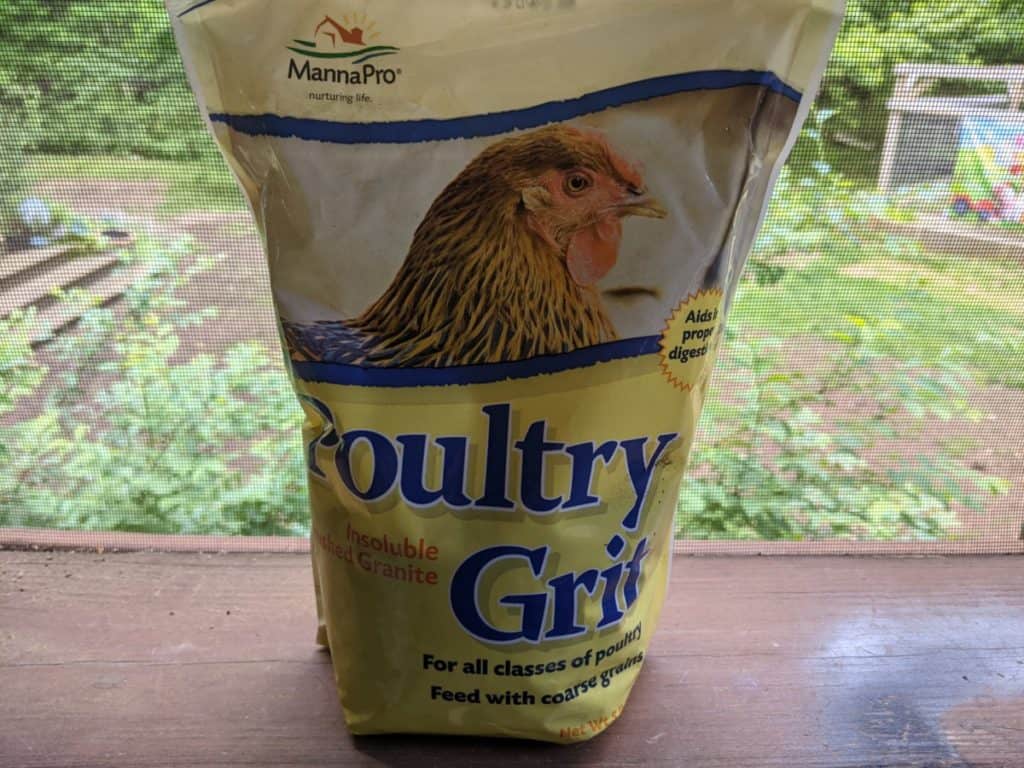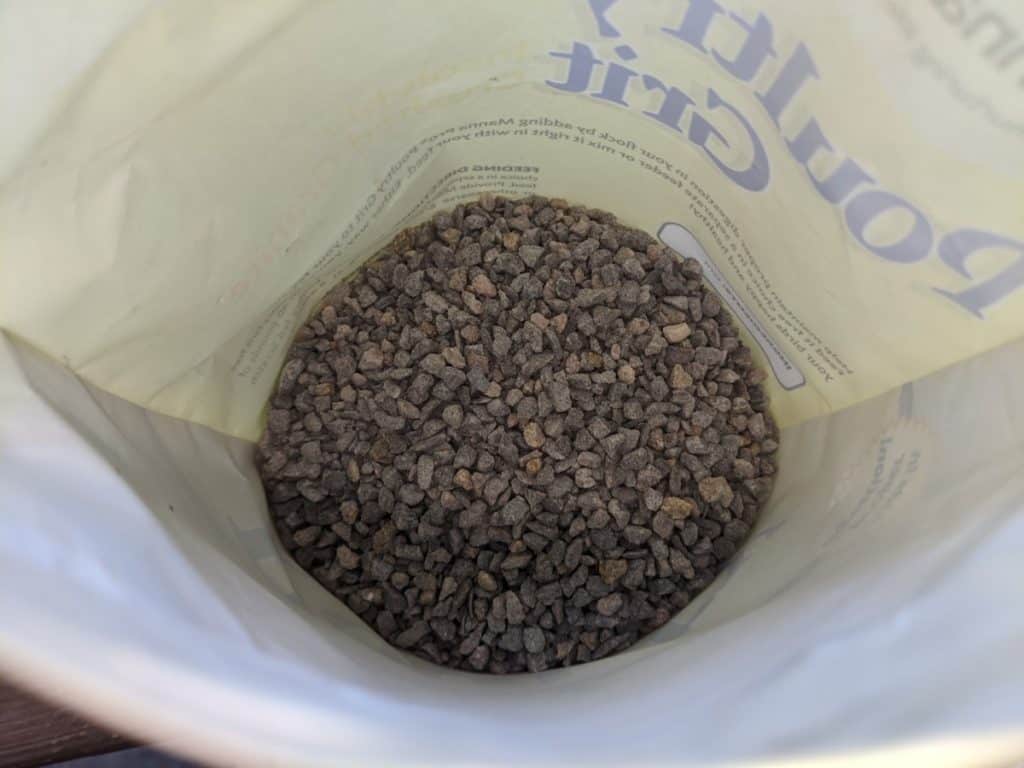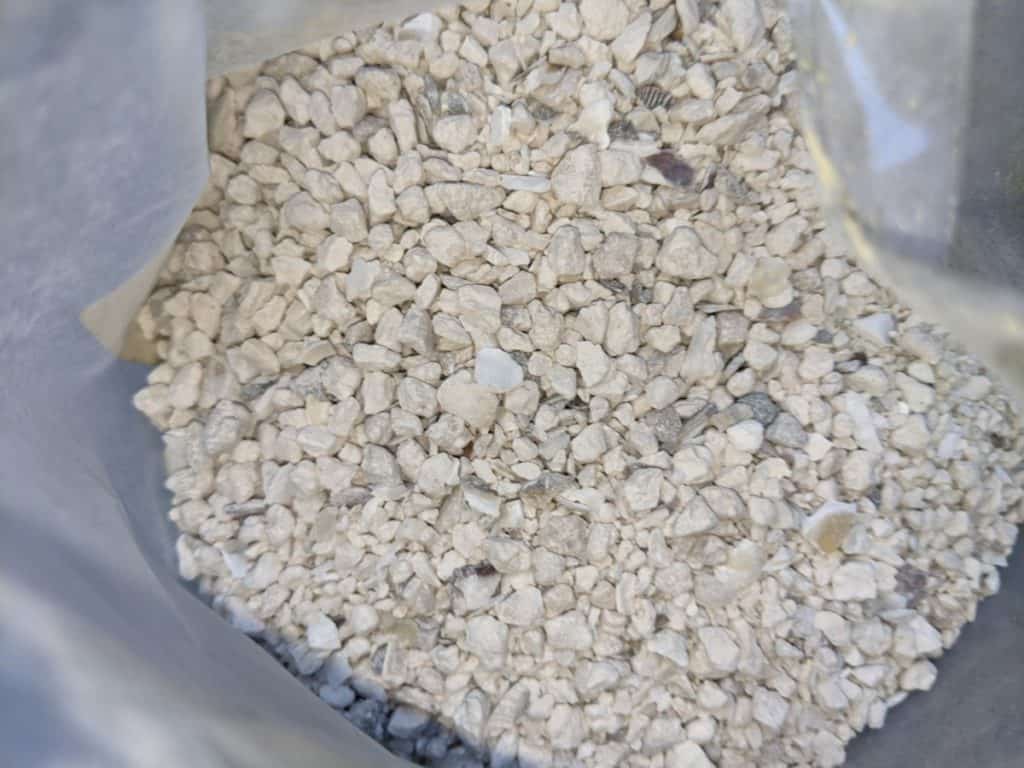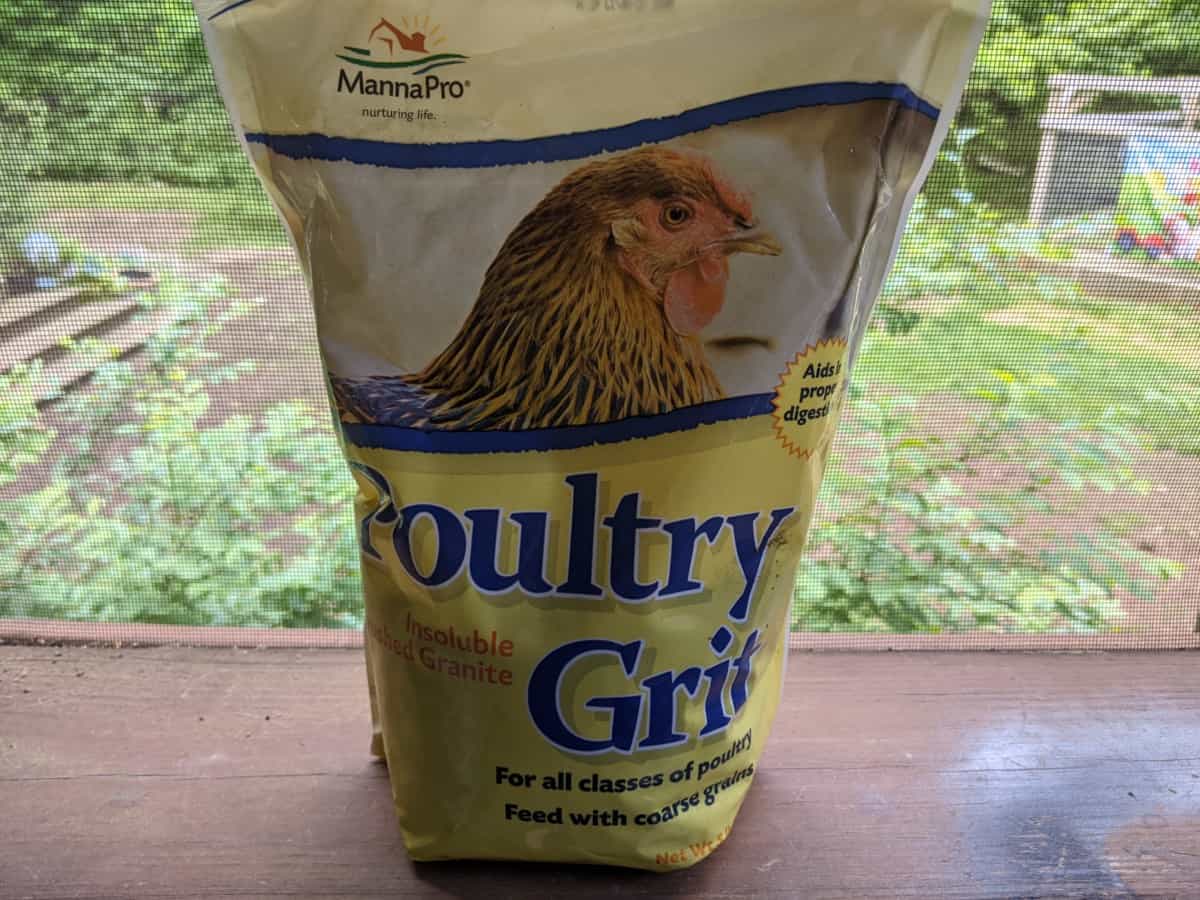Chickens have one of the most effective digestive tracts in the animal world. They do not have any teeth to bite, tear or chew the food they consume, so how do they break down food?
Having chickens, you will know that they gulp down anything that crosses their path with enthusiasm, but they need a little help to digest food, so can they simply swallow rocks like ostriches, or do chickens need grit?
Chickens need the grit to aid the breaking down of food. If they do not have access to small rocks or coarse sand, adding grit to their diet is a good idea. The food gets ground up into smaller particles with the help of small stones or grit inside the gizzard. Without grit, digestion would be difficult.
Being omnivores, they thrive on a diet packed with protein and all kinds of greens and vegetables. It is common for chickens to eat all manner of insects, snakes, worms, and even mice.
They love their green leafy foods, vegetables, and fruits and relish a special treat now and then. If you have backyard chickens, adding some grit into their food will help keep the digestion uneventful and regular. Let’s look at grit a bit more in-depth;

What Is Grit?
There are two types of grit that are commercially available at any good farmer’s supply store. They are;
- Oyster Shell Grit – This type of grit is made from ground-up Oyster shells. This grit also adds extra calcium to the chicken’s diet and strengthens the eggshells.
- Flint or Granite Grit – Typically, this is made from ground flint or granite. This does not add any calcium to the chicken’s diet and is purely for digestion.
There is a myth that chickens don’t need both types of grit, and that is false. Oyster grit is essential to your laying hens. It helps them form healthy strong-shelled eggs and keeps their bones strong. The Oyster shell dissolves inside the digestive tract and is absorbed for bones and eggs.
Flint or granite grit is needed to aid digestion, and this type of grit does not dissolve like the oyster grit.
You can leave a large bowl of oyster grit where the chickens can freely get to it and eat as much as they need.
What Does Grit Do For Chickens?
Because chickens do not have teeth to bite food into smaller pieces, they need a mechanism to grind their food into much smaller, digestible chunks. This is the job of the gizzard.
It is a very muscular organ like a stomach, and the grit they eat gets stored inside it. When the muscular gizzard starts to massage the food, the grit inside breaks down the food making digestion possible.
Do Free Range Chickens Need More Grit?
Free-ranging chickens can pick up small stones and soil while they are foraging for food, so they would not need as much extra grit as hens that are confined, for example.
You can supplement them with grit once a week to make sure they can digest their food correctly.
How Often Do Chickens Need Grit?
Typically, you would add extra grit to your chicken’s food at least once a week, especially if they eat lots of different foods and are good layers. If you only feed scratch, it is much easier for the chickens to digest.
If they are on a scratch-only diet but are good layers, then you can add oyster grit In a bowl inside their coop, so they have it available all the time.

How Much Grit Do Chickens Need?
There is no recipe to determine the amount of grit per chicken or per kilogram of food. You can make sure the grit is freely available to the chickens where they tend to scratch or in the feeding bowls.
This way, you are sure they have taken in some extra calcium. A laying hen will need a minimum of 4-5 grams of calcium intake per day. This is to ensure she does not draw calcium from her bones to produce good quality eggshells. Hens also need adequate amounts of manganese, zinc, Vitamin D3, magnesium, and phosphorous.
Free-range hens walk around a lot and will need a higher supplement intake than more stationary hens.
How Do You Feed Grit To Your Chickens?
There are several ways to feed grit to your chickens. You can do one of the following things;
- Inside a grit bowl so that you can monitor the amount they ingest.
- On the ground where they like to scratch and forage.
- Mixed into cooked oatmeal as a treat, so you know they have had a portion of grit.
- Mixed into the regular scratch mix, you buy from the store.
How Long Does Grit Stay Inside A Chicken?
Grit will remain inside a chicken’s crop and gizzard for the same amount of time it takes for the food to digest properly. The grit could be inside the chicken anywhere from 6 to 8 hours.
For this reason, chickens need access to grit constantly so they can replenish the grit that has passed through the digestive tract. You will notice chickens want grit more in the colder months, perhaps due to the digestion being a little slower.
Can You Use Sand As Grit?
Sand is a great medium to use inside chicken coops. The best sand for the job would be triple-washed building sand or commonly called river sand.
The sand not only keeps the temperature even, but it is also easy to clean. Sand is a suitable grit medium for chicks that cannot yet eat the larger crushed maize and other feeds. They can get a sufficient amount of grit in while the free-range inside their coop. Feeding rough grit is not recommended for chicks.
Older chickens can take up sand for grit, but they prefer a coarser medium to help their digestion.

Can You Make Your Own Grit?
Unless you own a granite quarry and can mine and crush it down into grit or have a supply of oyster shells, it is not advised to make your own rough grit. The reason for that is that some stones could have other trace minerals that might not be good for your chickens.
Store-bought oyster shell and flint grit are inexpensive and readily available. If your chicken’s free-range, chances are they pick up small stones and sand already.
Is Crushed Eggshell Like Grit?
Washed and crushed eggshells can be a form of grit for your hens. You can collect used shells and give them a proper rinse to get rid of any albumin. Grind them in a blender until fine. You can add this as a calcium-rich grit to their food.
Eggshell grit will act more like a calcium supplement than a digestive aid. The crushed eggshell will be absorbed by the body much as the oyster shell grit does.
Can You Feed Grit To Chicks?
Baby chicks take a few weeks to get ready for the outdoors. Their digestive tracts are developing, and typically they will only be eating chick scratch for a few weeks. You can purchase special chick grit from your farmer supply store and mix it into their regular feed.
Once they start free-ranging, they will be introduced to a wider variety of foods, insects, and greens. By this time, the added grit will help them transition from being in a cooped area to the free-range arena with its vast menu.
Conclusion
Grit for chickens is an essential part of their diet. They depend on flint grit or smaller stones from the garden to aid digestion. The oyster shell grit supplies them with the calcium they need to maintain bone density and good eggshell quality.
Chickens need grit almost daily, and they know how much to eat to help with the breaking down of food. If you supply your chickens with sufficient grit of both varieties, you will help them stay healthy and get great quality eggs in return.

